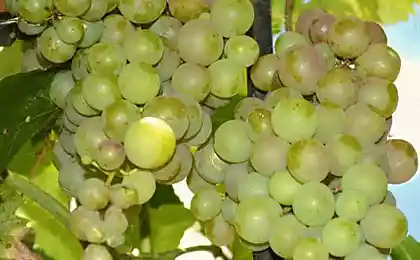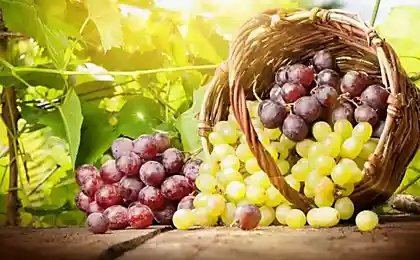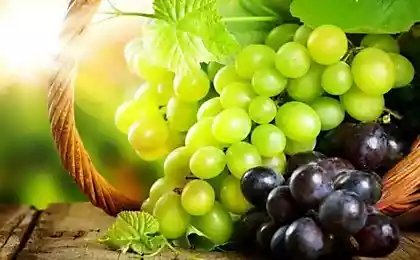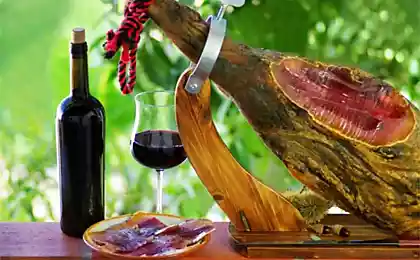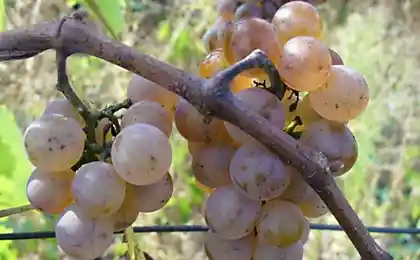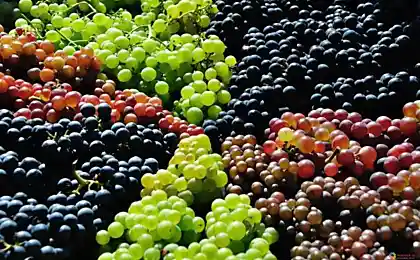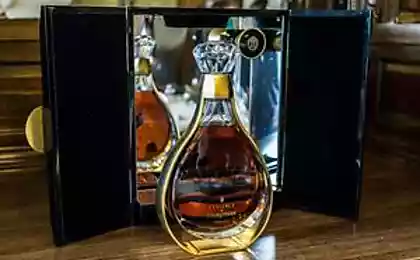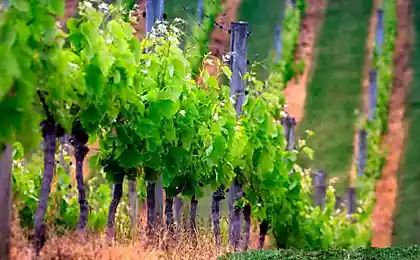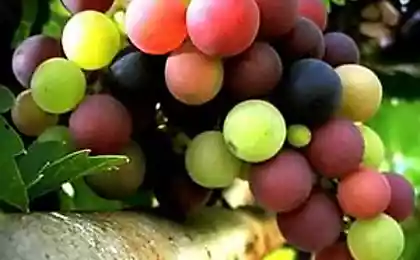760
How to cope with the diseases of grapes: tips for gardeners
Growing grapes is fraught with many "pitfalls", which the grower needs to be aware, to be able to take preventive measures.
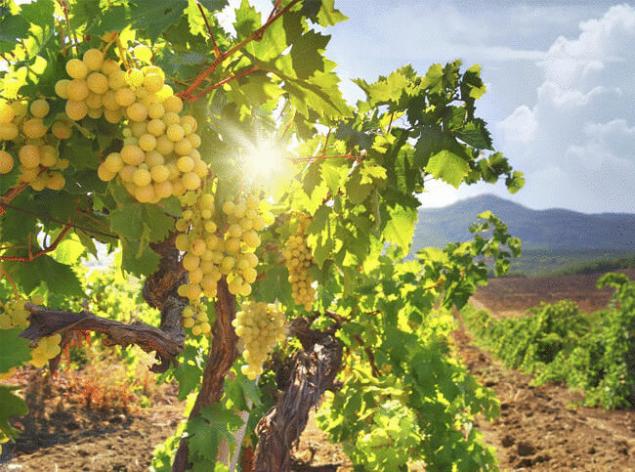
The main "stumbling block" for growing grapes for the grower are disease of this plant, which affects varieties. Chief whip of the vine downy mildew (mildew). This fungal disease is able in a matter of days to deprive the growers of all crops. Mildew develops rapidly in moist cool climates and attacks all aerial parts of the plant. The spores of the fungus overwinter in fallen leaves of grapes, and in the spring with moisture they penetrate into the tissue of the plant. On leaves, shoots, and ovaries are formed yellowish spots which then turn black and die.
The second common disease is a real powdery mildew (oidium), which also is caused by a fungus. Symptoms similar to downy mildew, treatment methods largely coincide. Another fungal disease – gray mold that develops in rainy weather. In this disease the berries are covered by brown spots, gray bloom and rot on the branches. To combat Botrytis, use Bordeaux mixture.
Several other diseases are spread a little less, but also can damage the vineyard: spotted necrosis and Cercospora – both diseases cause the death not only of the harvest and of the bushes. To cope with the above diseases, the grower must relentlessly combat fungi: in the autumn to remove dry leaf, three times per season to handle the vineyard colloidal sulphur, copper or iron sulphate (depending on the disease), to remove all diseased branches and ruthlessly uprooted dead bushes. The first treatment should be done before Bud break, the second time you should spray the plants after harvest, for the third time before preparing for winter.
To get a good harvest in the autumn, it is necessary to carefully prune the vines.
Need to monitor the condition of the soil under the bushes, in a timely manner to remove weeds, to loosen and to mulch the ground with compost or peat. To combat these diseases, you can use traditional methods: infusions of wood ash, garlic with the addition of soap. This mixture should be sprayed the plants at the first signs of the disease. To reduce the risk of destruction of the vineyard, it is necessary initially to consider the correct location of the bushes, to ensure their good ventilation. The old vines need to be trimmed, forming the bushes, removing any damaged, diseased or non-standard form of a branch. Have to leave at three main stem, to avoid thickening and shading plantings.
In the shelter of bushes for the winter to ensure that the shoots do not vybrali, so no need to lay the vines on the bare ground, it is better to use mulch and top to cover them with roofing material or film, which with the onset of spring warmth need time to remove. A particular concern of growers is the control of rodents, which for winter storage vine spoil its bark and killed the bushes. To avoid this, you need to put the drugs to combat them close to cover.published
P. S. And remember, only by changing their consumption — together we change the world! ©
Source: domashniy.ru/

The main "stumbling block" for growing grapes for the grower are disease of this plant, which affects varieties. Chief whip of the vine downy mildew (mildew). This fungal disease is able in a matter of days to deprive the growers of all crops. Mildew develops rapidly in moist cool climates and attacks all aerial parts of the plant. The spores of the fungus overwinter in fallen leaves of grapes, and in the spring with moisture they penetrate into the tissue of the plant. On leaves, shoots, and ovaries are formed yellowish spots which then turn black and die.
The second common disease is a real powdery mildew (oidium), which also is caused by a fungus. Symptoms similar to downy mildew, treatment methods largely coincide. Another fungal disease – gray mold that develops in rainy weather. In this disease the berries are covered by brown spots, gray bloom and rot on the branches. To combat Botrytis, use Bordeaux mixture.
Several other diseases are spread a little less, but also can damage the vineyard: spotted necrosis and Cercospora – both diseases cause the death not only of the harvest and of the bushes. To cope with the above diseases, the grower must relentlessly combat fungi: in the autumn to remove dry leaf, three times per season to handle the vineyard colloidal sulphur, copper or iron sulphate (depending on the disease), to remove all diseased branches and ruthlessly uprooted dead bushes. The first treatment should be done before Bud break, the second time you should spray the plants after harvest, for the third time before preparing for winter.
To get a good harvest in the autumn, it is necessary to carefully prune the vines.
Need to monitor the condition of the soil under the bushes, in a timely manner to remove weeds, to loosen and to mulch the ground with compost or peat. To combat these diseases, you can use traditional methods: infusions of wood ash, garlic with the addition of soap. This mixture should be sprayed the plants at the first signs of the disease. To reduce the risk of destruction of the vineyard, it is necessary initially to consider the correct location of the bushes, to ensure their good ventilation. The old vines need to be trimmed, forming the bushes, removing any damaged, diseased or non-standard form of a branch. Have to leave at three main stem, to avoid thickening and shading plantings.
In the shelter of bushes for the winter to ensure that the shoots do not vybrali, so no need to lay the vines on the bare ground, it is better to use mulch and top to cover them with roofing material or film, which with the onset of spring warmth need time to remove. A particular concern of growers is the control of rodents, which for winter storage vine spoil its bark and killed the bushes. To avoid this, you need to put the drugs to combat them close to cover.published
P. S. And remember, only by changing their consumption — together we change the world! ©
Source: domashniy.ru/

